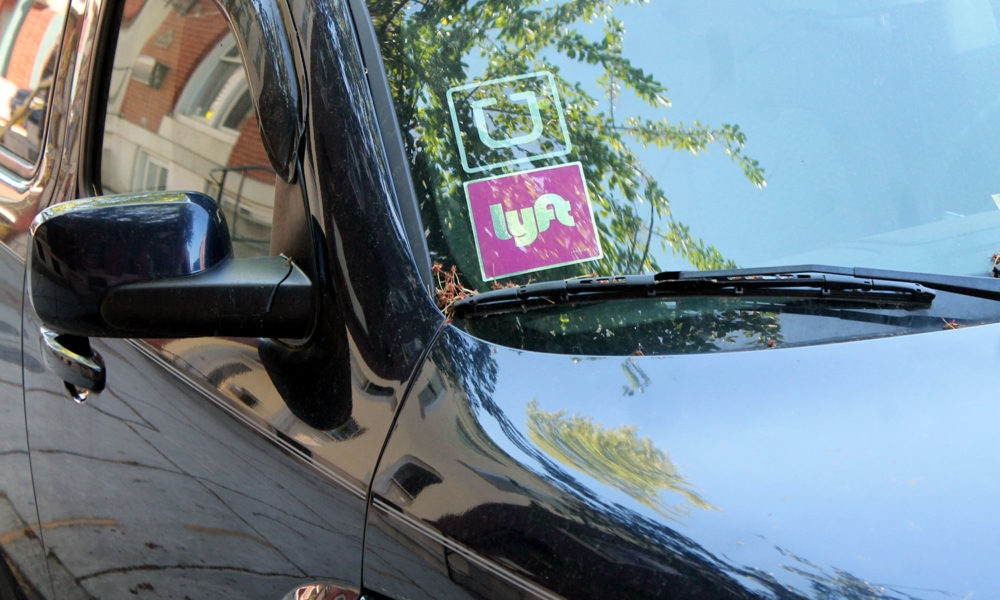On May 20th, CARB will vote on the Clean Miles Standard, a first-of its kind regulation that would require ridehailing companies like Uber and Lyft to electrify their fleets by 2030. If approved, the Clean Miles Standard would cut pollution in cities across California by requiring that 90% of ride hailing miles traveled take place in electric vehicles by 2030, and that ridehailing companies cut their greenhouse gas emissions to zero grams per passenger mile on the same timeline.
This standard has the potential to be a win for the environment and for drivers. On the environment side, the rule reduces both greenhouse gases and air pollution. UCS analysis finds that ride-hailing trips are 69% more polluting than the trips they replace and a non-pooled Uber or Lyft ride is 47% more polluting than a private car trip. Numerous other studies show that the rise of ride-hailing services has increased air pollution, congestion, and vehicle miles traveled in cities across the U.S. The Clean Miles Standard will ensure the ride-hailing industry gets on a path to lower emissions and helps lead the transition to zero emission vehicles – consistent with the public pledges they’ve made.
Ridehailing drivers can also save money on lower fuel and maintenance costs by switching to electric vehicles. The challenge is that, with the passage of Prop 22, drivers remain classified as independent contractors and own their own vehicles. And while drivers stand to save significant amounts on fuel and maintenance costs, EVs are currently more expensive to buy than comparable gas-powered vehicles, and drivers are likely to have some other higher up-front costs related to installing a home charger and higher insurance costs. Up front cash that low income drivers may not have on hand.
Throughout the development of this standard, UCS has pushed CARB to ensure that the ride hailing companies support drivers with these up front costs. But how much would it cost Uber and Lyft on a per-mile basis to support the up front costs of transitioning to EVs, while allowing drivers to keep the longer term savings?
Based on the economic analysis performed by CARB, I found that it would cost less than 4 cents per mile (or, given average trip length of 12 miles, about 43 cents per trip) for Uber and Lyft to cover increased vehicle costs, home charger installation, and insurance costs, while the average driver would save over $1000 with a year of driving.

To answer this question I used publicly available info from CARB’s regulatory documents, in particular this spreadsheet of CARB’s cost model assumptions, the Base Year Emissions Inventory CARB published in December 2019, the targets in the proposed rule, and additional information presented in a November public workshop to estimate the per mile costs and benefits.

We think these estimates of costs are on the conservative end, both because CARB is making relatively conservative assumptions (for example, CARB projects the cost of gas will remain below $2.67 per gallon through 2030) and because it assumes relatively limited support from California in the form of vehicle rebates.**
I assumed each driver received a modest $1000 rebate on the purchase of an EV from some combination of the Clean Vehicle Rebate Program, the new LCFS Clean Fuel Reward Point of Sale Rebates, or other programs. CA currently has several incentives programs for EVs which can amount to much more than $1000 per vehicle, especially for lower income drivers. While funding for these programs can vary, the more recent Clean Fuel Reward program has stable funding, is widely available to EV buyers at the dealership, can be combined with other incentives, and currently is $1500 for a battery electric vehicle.
The bottom line: The Clean Miles Standard has the potential to make real positive change, for the environment and for drivers, and hold ride hailing companies accountable to the commitments they’ve made to go electric.
** For example, in 2027, 50% of ridehailing miles will need to be electric. Based on CARB’s projections of industry growth, that translates into about 3 billion electric miles. CARB projects that about 140,000 drivers will need to make the switch that year, in addition to the drivers already using EVs. Each of these drivers will have up-front costs that include incremental vehicle cost (averaging $1622 for passenger cars, $3072 for light trucks, minus $1000 in EV incentives) home charger installation ($1280) and insurance ($80). Multiplying these costs by the number of vehicles, and then dividing by the total miles CARB projects all ridehailing vehicles to drive (a little over 6 billion yields a total of about 5 cents per mile for that year. Costs are significantly lower in earlier years when fewer drivers are switching and also decline in later years as the incremental costs of electric vehicles continue to drop. At the same time, drivers save by using electricity (19 cents per kwh) rather than gas ($2.63 per gallon) and reducing maintenance costs (4 cents per mile).

